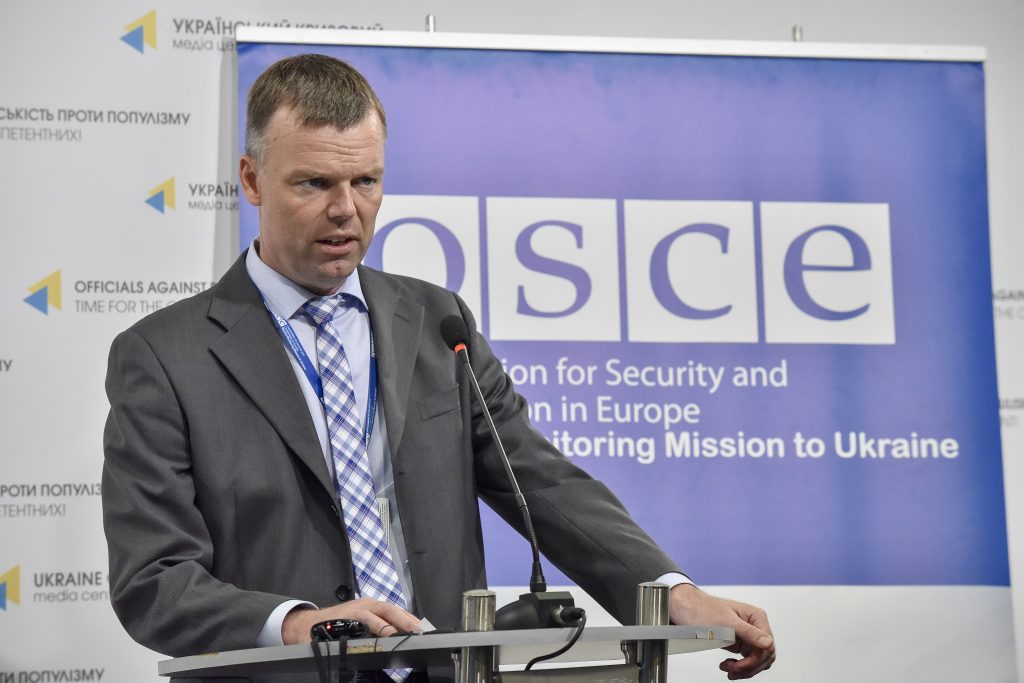Last week, the number of ceasefire violations in the conflict zone in eastern Ukraine decreased by 10 per cent last week, according to the OSCE Special Monitoring Mission to Ukraine. However, violence continues despite the recent ceasefire on the occasion of a new academic year, said Alexander Hug, Principal Deputy Chief Monitor of the OSCE SMM, at a press briefing at Ukraine Crisis Media Center.
“In all, since midnight on Wednesday [August 29], when the recommitment came into effect, we have recorded at least 370 ceasefire violations. There is also still a failure to disengage from the contact line. Last week, for example, we recorded ceasefire violations inside two of the three pilot disengagement areas, namely Stanytsia Luhanska and Petrivske. And we routinely see personnel and hardware in all three disengagement areas, and there are still mines everywhere,” noted Alexander Hug.
In Krymske-Zholobok-Donetske area in Luhansk region the number of ceasefire violations increased. “In just three hours [On August 23], the OSCE SMM recorded approximately 500 explosions in that area,” said Mr. Hug.
Principal Deputy Chief Monitor of the OSCE SMM also noted that the commitment to stop hostilities for the time of repairs at the Donetsk Filtration Station and residential areas of Avdiivka last week was not fulfilled. “We were given explicit security guarantees that there would be windows of silence. […] Instead of silence, our monitors who were facilitating and monitoring the work, heard about 1,600 ceasefire violations,” Mr. Hug noted.
The OSCE SMM has confirmed information that one civilian, a 35 year old man from Rubizhne in Government-controlled area, was killed by the shelling last week as a round hit his house. “Our monitors are also currently corroborating information that there have been a number of civilian casualties in recent days in areas not controlled by the Government,” Alexander Hug added.
Mr. Hug noted that the OSCE SMM in the dialogue with leaders of the so-called “LPR” and “DPR” has raised the issue of access to detention places in areas not controlled by the Government for representatives of international organizations. “The SMM engages with the armed formations on a regular basis and has also expressed interest to support visits to people held in areas not controlled by the Government. In this context, we work very closely with the UN Human Rights Monitoring Mission and the International Committee of Red Cross,” he elaborated.




